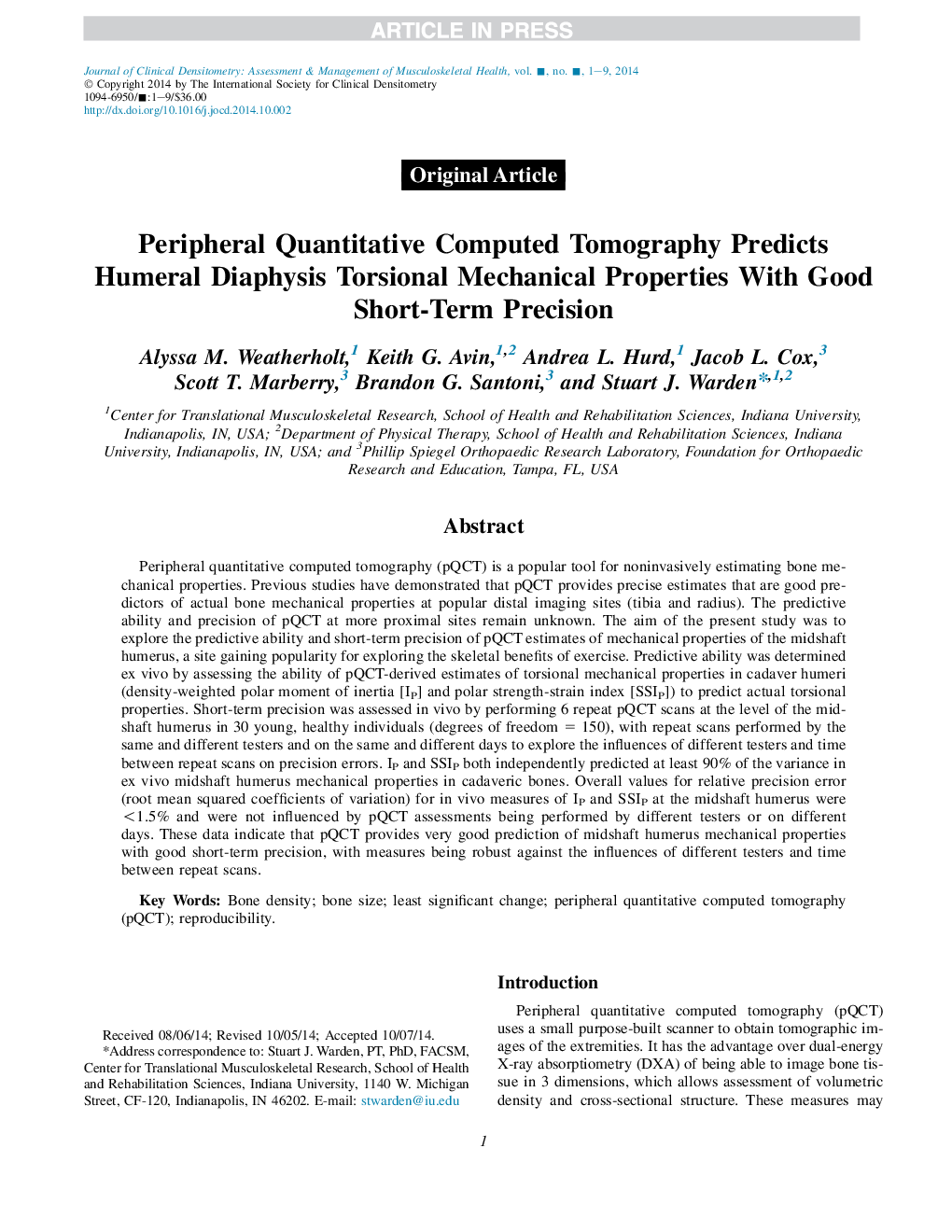| کد مقاله | کد نشریه | سال انتشار | مقاله انگلیسی | نسخه تمام متن |
|---|---|---|---|---|
| 10168063 | 1208244 | 2015 | 9 صفحه PDF | دانلود رایگان |
عنوان انگلیسی مقاله ISI
Peripheral Quantitative Computed Tomography Predicts Humeral Diaphysis Torsional Mechanical Properties With Good Short-Term Precision
دانلود مقاله + سفارش ترجمه
دانلود مقاله ISI انگلیسی
رایگان برای ایرانیان
کلمات کلیدی
موضوعات مرتبط
علوم پزشکی و سلامت
پزشکی و دندانپزشکی
غدد درون ریز، دیابت و متابولیسم
پیش نمایش صفحه اول مقاله

چکیده انگلیسی
Peripheral quantitative computed tomography (pQCT) is a popular tool for noninvasively estimating bone mechanical properties. Previous studies have demonstrated that pQCT provides precise estimates that are good predictors of actual bone mechanical properties at popular distal imaging sites (tibia and radius). The predictive ability and precision of pQCT at more proximal sites remain unknown. The aim of the present study was to explore the predictive ability and short-term precision of pQCT estimates of mechanical properties of the midshaft humerus, a site gaining popularity for exploring the skeletal benefits of exercise. Predictive ability was determined ex vivo by assessing the ability of pQCT-derived estimates of torsional mechanical properties in cadaver humeri (density-weighted polar moment of inertia [IP] and polar strength-strain index [SSIP]) to predict actual torsional properties. Short-term precision was assessed in vivo by performing 6 repeat pQCT scans at the level of the midshaft humerus in 30 young, healthy individuals (degrees of freedom = 150), with repeat scans performed by the same and different testers and on the same and different days to explore the influences of different testers and time between repeat scans on precision errors. IP and SSIP both independently predicted at least 90% of the variance in ex vivo midshaft humerus mechanical properties in cadaveric bones. Overall values for relative precision error (root mean squared coefficients of variation) for in vivo measures of IP and SSIP at the midshaft humerus were <1.5% and were not influenced by pQCT assessments being performed by different testers or on different days. These data indicate that pQCT provides very good prediction of midshaft humerus mechanical properties with good short-term precision, with measures being robust against the influences of different testers and time between repeat scans.
ناشر
Database: Elsevier - ScienceDirect (ساینس دایرکت)
Journal: Journal of Clinical Densitometry - Volume 18, Issue 4, October 2015, Pages 551-559
Journal: Journal of Clinical Densitometry - Volume 18, Issue 4, October 2015, Pages 551-559
نویسندگان
Alyssa M. Weatherholt, Keith G. Avin, Andrea L. Hurd, Jacob L. Cox, Scott T. Marberry, Brandon G. Santoni, Stuart J. Warden,